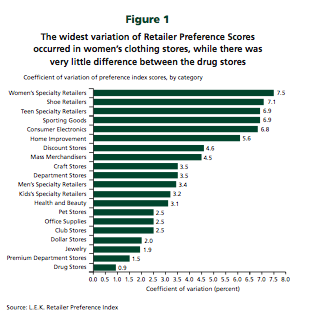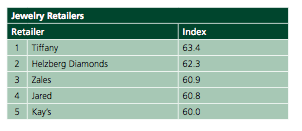Articles and News
What Tiffany and Target Have in Common | November 29, 2010 (0 comments)

New York, NY—Here’s a hint: It’s not that both sell jewelry.
Both Tiffany and Target, along with Apple, Brooks Brothers, Kohl’s, H&M, L.L. Bean, Neiman Marcus, were among those retailers whom consumers ranked at the top of their respective categories in the L.E.K. Retailer Preference Index.
L.E.K. Consulting LLC, a global consulting company, developed its first annual L.E.K. Retailer Preference Index to better gauge why consumers favor particular retailers, and how retailers compare with their peers across crucial selection criteria. The Index identifies how retailers are perceived in the market, where consumers believe they are strong and where there are opportunities for improvement. Brands that rank high can use the rankings to understand their strong points and better communicate their key points of differentiation, says the firm, while those that lag can develop strategies to change market perceptions.
Finally, those companies in categories with little perceived differentiation can use the information to take action to help better distinguish themselves, says the firm.
L.E.K. surveyed 3,000 U.S. consumers for key factors shaping their shopping decisions, and ranks retailers in 20 categories, using a 100-point scale to score them based on criteria such as preference relative to competitor stores within a specific category. Factors that drive preference for one retailer vs. another include such attributes as perceived value for money, variety, quality of service, convenient location, fashion leadership, and shopability.
L.E.K. says the importance of these factors varies widely by retailer category; also the degree to which retailers differentiate themselves on the key bases of competition varies. Interestingly, in almost half of the categories, the top two retailers were separated only by small margins, suggesting little consumer loyalty even among leaders.
The widest variance of consumer preference scores occurred in the women’s clothing and shoe categories; the least, in drugstores—indicating consumers see little difference between those retailers. Jewelry stores, too, had little variance; they came in third from last, followed by premium department stores, then drugstores, as shown below.

Here is the jewelry-store preference chart:

Click here to read fuller detail on all retail category findings.







